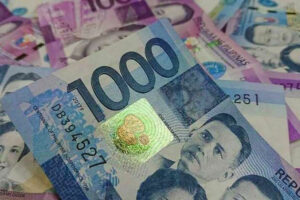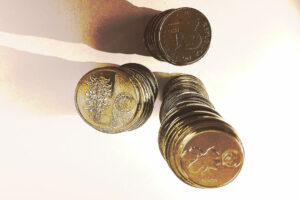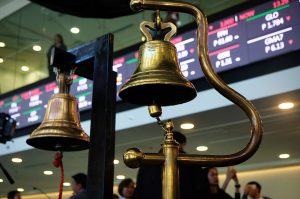THE PESO declined slightly as the dollar was broadly stronger on Thursday amid signals from China’s central bank regarding the yuan.
The local unit closed at P58.78 a dollar on Thursday, inching down by 2.5 centavos from the previous day’s finish of P58.755.
The peso opened Thursday’s session weaker at P58.79 against the dollar. Its worst showing was at P58.83, while its intraday best was at P58.70 versus the greenback.
Dollars exchanged increased to $1.28 billion on Thursday from $930 million on Wednesday.
“Emerging market currencies, including the Philippine peso, experienced a decline after China’s central bank indicated a more relaxed stance on the yuan by setting its daily reference rate at the weakest level since November,” Security Bank Corp. Chief Economist Robert Dan J. Roces said in a Viber message.
“The peso’s drop… suggests a broader downturn in Asian currencies, driven by anticipations of interest rate cuts by policy makers preceding actions from the US Federal Reserve,” Mr. Roces added.
China set the yuan’s daily reference rate at its weakest since November in a sign policy makers are loosening their grip on the currency, Bloomberg reported.
The People’s Bank of China set the so-called fixing at 7.1192 per dollar, an increase of 33 ticks, the most in about two months. The move comes as the dollar inches closer to this year’s peak, with traders betting on higher-for-longer interest rates in the US.
The onshore yuan was little changed around the 7.26 level, while the offshore currency slipped to its weakest this year. The fixing came as Chinese banks maintained their benchmark lending rate for a 10th straight month, as pressure on the yuan restricts policy makers’ space for easing.
The weakness in China’s currency is symptomatic of deteriorating sentiment toward the world’s second-largest economy, which is also experiencing a bond market rally as investors seek out haven assets. Yields have tumbled to or toward record lows amid mixed economic data and expectations of further stimulus.
Worsening capital outflows, seen in a surge in local firms’ purchase of foreign exchange and exporters’ hoarding of the dollar, have also added to the yuan’s woes. And from the dollar’s side, any delay to Federal Reserve rate cuts would likely add more pressure on the yuan as China’s wide interest-rate gap with the US favors the greenback.
China has maintained a strong hold on the yuan using its daily reference rate for most of the year. However, it has been gradually weakening its so-called currency fixing amid calls from former officials for relaxing its control over the yuan in order to open the room for more easing.
Higher global crude prices recently also caused the peso to weaken, Rizal Commercial Banking Corp. Chief Economist Michael L. Ricafort added in a Viber message.
For Friday, Mr. Ricafort said the local unit could move between P58.65 and P58.80 per dollar. — AMCS with Bloomberg





